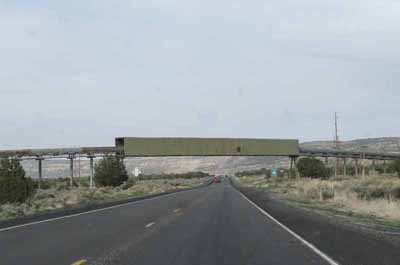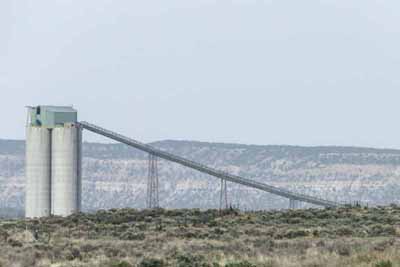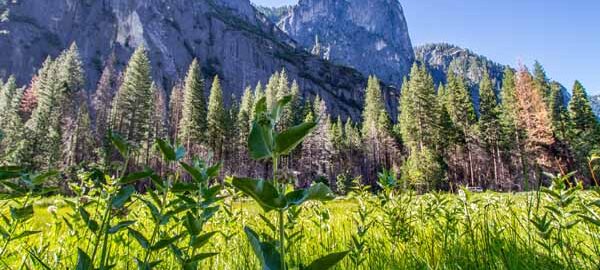Black Mesa, Arizona
I have been driving back and forth annually along US 160 on my way to/from the Phoenix area for at least twenty years.
As an avid photographer, one of my favorite scenic locations is Monument Valley Navajo Trial Park located near in Kayenta, AZ. Not far from Kayenta I would pass by an unusual structure that crosses over the highway.
I was curious about this tunnel-like bridge in the area known as Black Mesa and did a search to see if I could find out the purpose of the structure. Here’s a little history about the two photographs below known as the Kayenta Mine.
Peabody Mining
Going back to 1964, Peabody Western Coal contracted with the Navajo and Hopi Tribes for the mineral rights on the mesa and use of its large underground aquifer. The company constructed two coal strip mines – one higher up on the mesa and a second in Kayenta.
The two operations regularly pumped 3 million gallons of water from the aquifer daily to wash and then transport a slurry of coal. Peabody constructed a 275-mile pipeline that carried the coal slurry to Laughlin, NV to generate electricity.
The coal mined in Kayenta was transported on a long conveyor belt (I called it an elevated tunnel) to a large silo. This coal was later shipped by train to the Navajo Generation Station in nearby Page, AZ.

The elevated conveyor carries coal across US Highway 160 |

The coal is stored in this silo awaiting transport by train to Page, AZ |
Controversey Over Water Usage
The two tribes soon claimed that the use of so much water from the aquifer was causing a decline in the amount potable water for their personal, farming and livestock operations. Additionally, this volume of water was not in keeping with the tribes’ cultural and religious need for clean water.
By the end of the 1990s, opposition to Peabody’s strip mining of the mesa had taken hold and the Black Mesa Mine’s last day of operation was December 2008.
Operations at the Kayenta Mine ended in late 2019 as the Navajo Generation Station closed.
The overhead conveyor and silo are no longer in use but the Navajos and Hopis in Black Mesa are hoping for environmental mitigation to their sacred lands.
For more information about Black Mesa click here.






